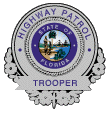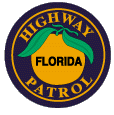Florida Highway Patrol Restoration
License plates
FHP ran rear plates only until around 1987. They then used front and rear plates until around 2001, when they returned to rear plates only (and a totally new design). The vehicle’s license plate number was also the unit number, and several different plates were used. There are several examples below. FHP worked with 3M, who had them test several different plates to determine the durability of manufacturing processes and design elements.
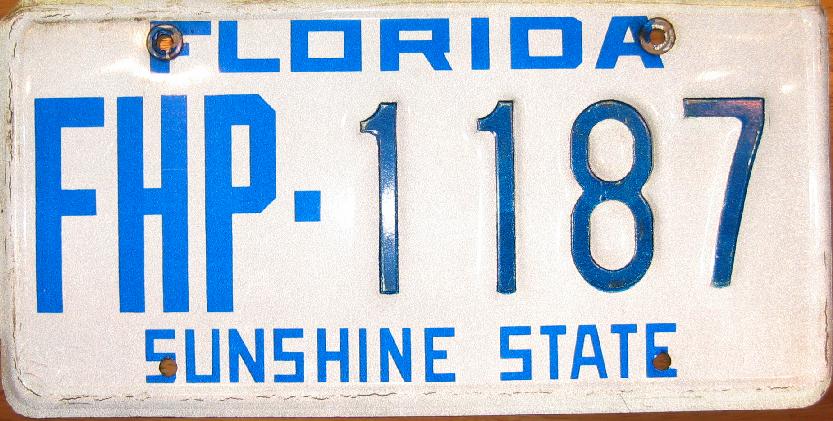
Plate style used on Mustangs from 1983 until around 1987.
"FHP" is flat, unit number raised (stamped).
|
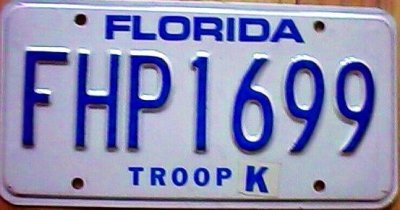
This style was used from about 1987 until around 1997.
Stamped "FHP" as well as unit number.
|
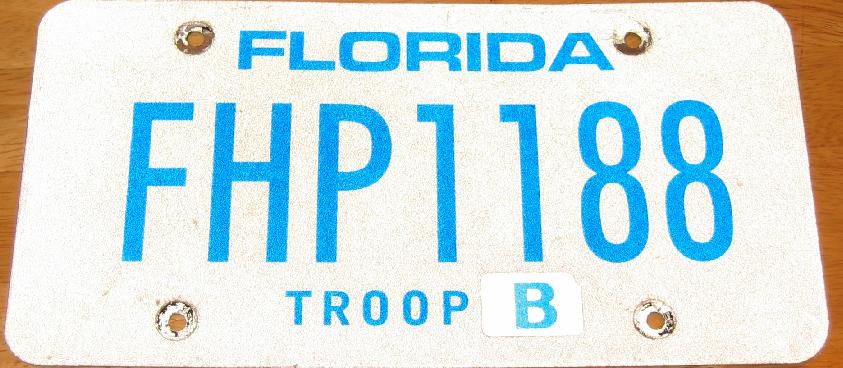
The last version, entering service in 1997. This one
is completely flat (and reflective).
|
For 1989, FHP cars received an anniversary-edition rear plate and decal placed above the 5.0 emblem on both fenders.
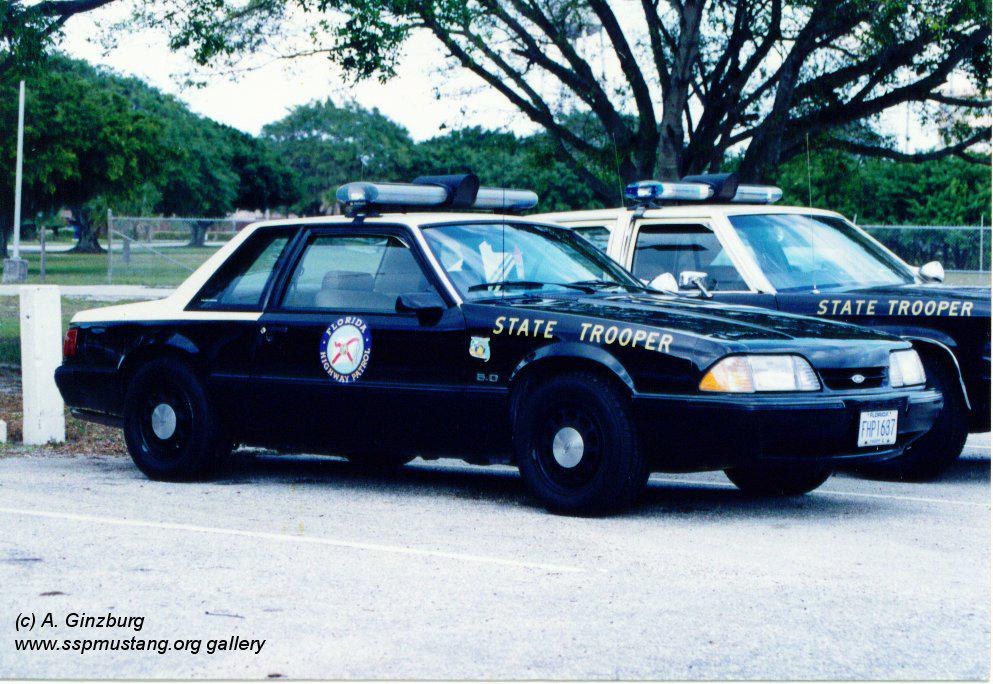
1989 Anniversary emblem. Alex Ginzburg photograph, from SSPmustang.org.
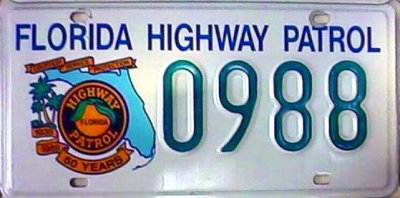
1989 Anniversary plate.
Radio Equipment
FHP utilized Motorola Micor radio equipment, transmitting on VHF (4 channel, 154 MHz frequency), through the run of the Mustang. FHP did start to transition to an 800 MHz digital system statewide beginning in 1997, but only units in certain areas received the system (it only went online in certain regions....it started in Broward, Dade, and Monroe counties as a pilot project in the early 90's). The cars all used dual antennas for the Micors, with the usual setup being a longer antenna on the roof (VHF, 12-18 inches), and a shorter one on the trunk lid (4 inches, for handheld-to-car transmissions at UHF 465 MHz, via use of a mobile, trunk mounted repeater). The Micors were 4 channel, scan head varieties, and the two heads most commonly seen are pictured below. The 800 MHz radios were Motorola Spectras (also remote mounted in the trunk, with the control heads up front). The Spectra-equipped cars would also have an 800 MHz anntenna added to the rear, but it may have taken the place of another antenna and not necessarily mean that the car had three antennas out back. Unit #576, with photos on page 1 of this document, shows an example of this. The car was equipped with both Micor and Spectra radios, and the VHF antenna apparently moved to the trunk lid from the roof, with an 800 Mhz antenna taking the roof spot. That particular car only had two rear antennas total. Other radios may also have been installed in the cars, depending on where they served (for inter-agency operability, upon written approval from the Director).
These were the typical, most common setups, but there were exceptions (ie. antennas mounted in the rear quarters). For additional information on the 800MHz radios and to see if your car was equipped with one based on when and where it was in-service, see
FHP 800 MHz information.
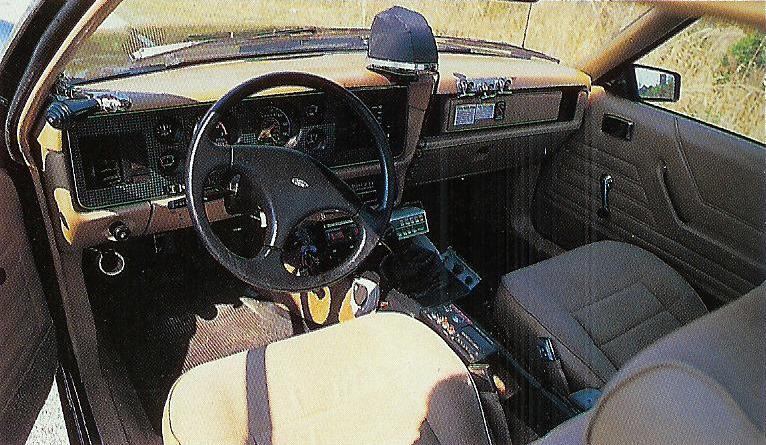
In-service pic, 1984 unit. Nice shot of the JSS switchbox, Federal PA 150 or 200 siren, single-tier Micor, VASCAR in-between the seats, and either an SVP or Federal Fireball II teardrop on the dash. Image courtesy of Mustang Chronicle.

In-service pic, Unit #576. Orlando-area car had both VHF and 800 MHz Spectra. This Micor is a 4-channel, scan head (two-tier, clamshell lower).
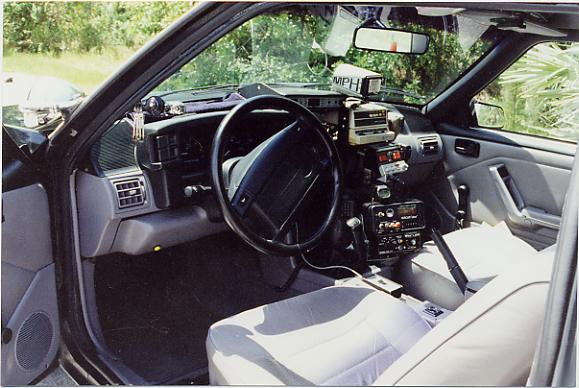
Another in-service pic of a 1993. This one also has the same micor, and was in an area that did not use the 800 MHz system. MPH K-55 Radar. Late-use of VASCAR, also.
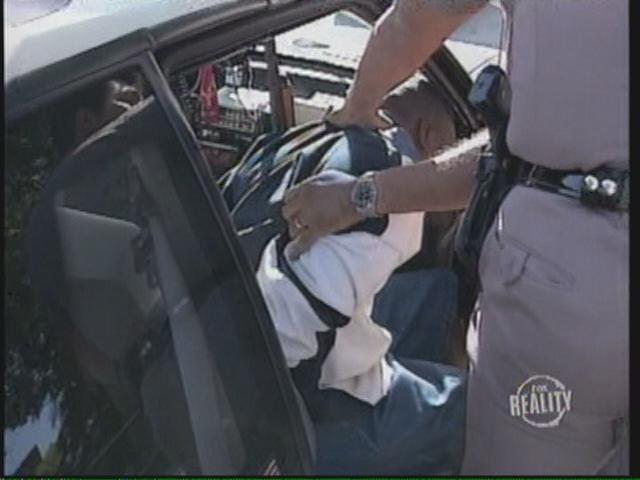
In-service pic, Miami unit. This Micor is the 4-channel, single-tier scan head. This unit also had a shotgun
mounted up front (atypical setup). Image courtesy of Real Stories of the Highway Patrol.
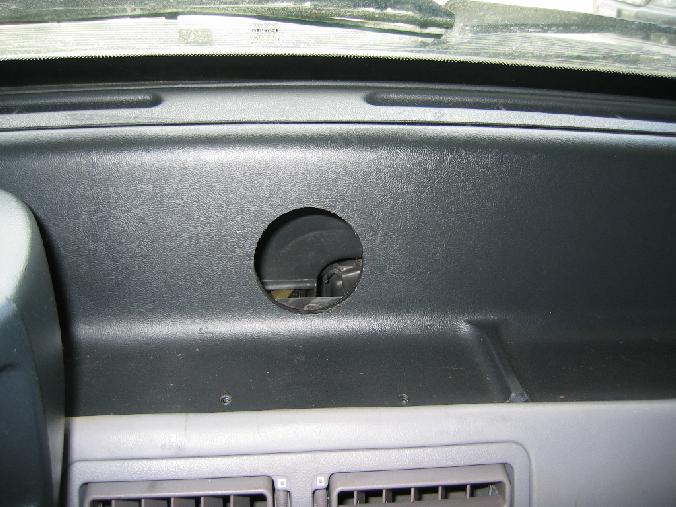
FHP 1187, Troop B car. This unit did not have the 800 MHz radio, and the holes on the bottom of the top of the dash are for the Micor
mounting bracket. Large hole behind it is typical of FHP installations, and was for the routing of the wiring for the radio equipment.
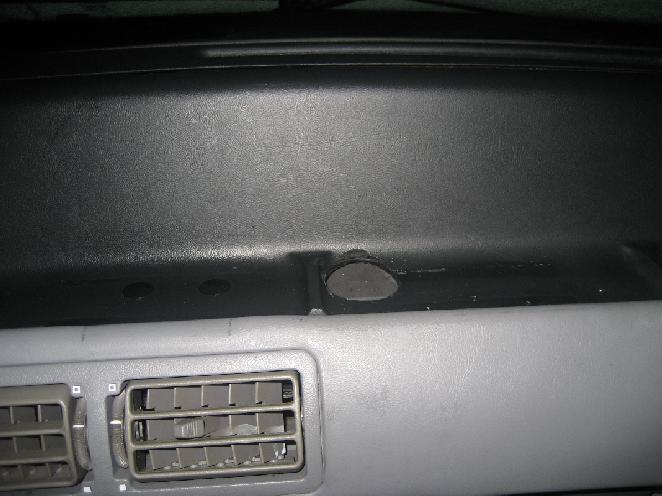
FHP 813, a Troop F unit. This unit also did not have an 800 MHz radio, and the hole on this one is on the horizontal shelf of the dash. Bernie Berrios photo.
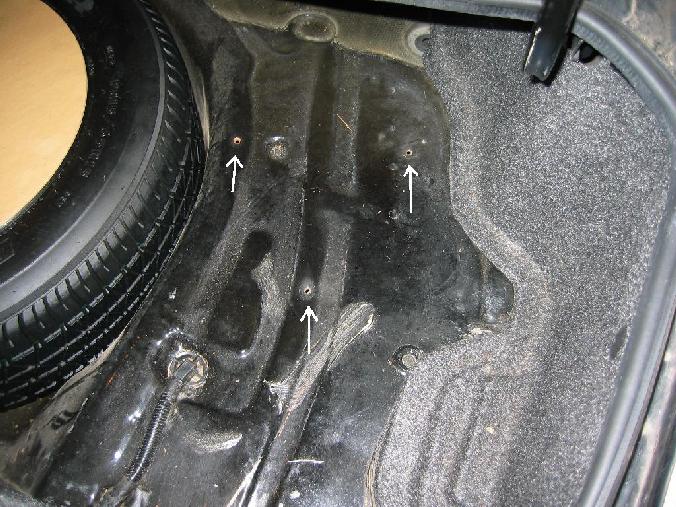
Trunk shot of 1187, Micor (and repeater) radio equipment mounting locations. These were mounted under the carpet on this unit.
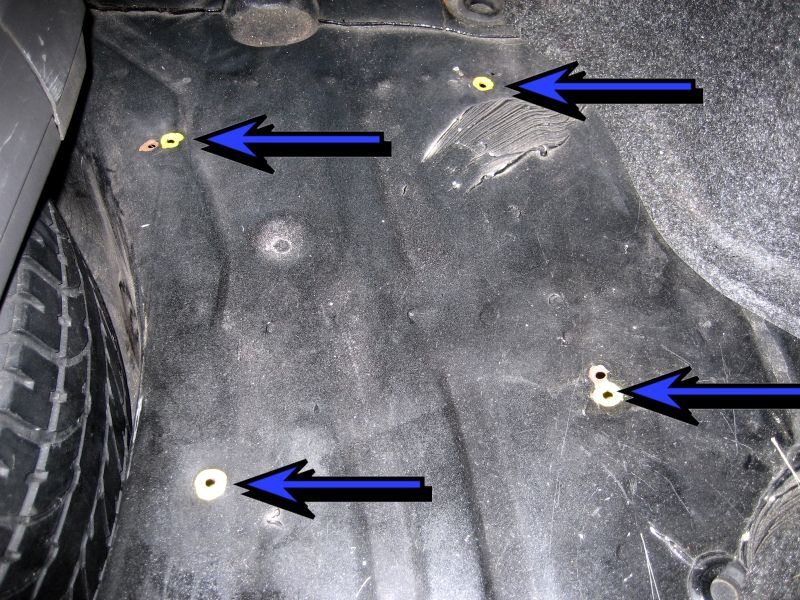
Trunk shot of FHP 813. Micor (and repeater) radio equipment mounting locations. These were mounted
under the carpet on this unit also. Bernie Berrios photo.
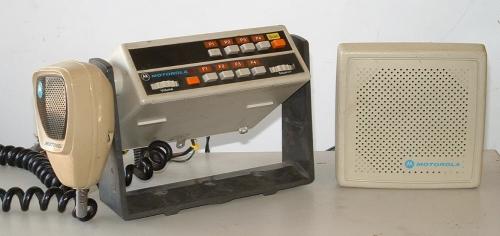
Here is a better pic of the other Micor used, single tier 4 channel scan.
|
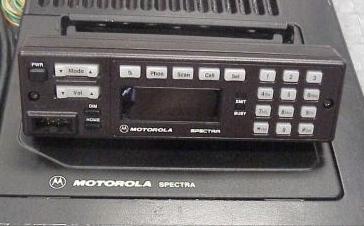
Typical 800 Mhz Motorola Spectra control head (A/B/C7 style). This is the same head seen
in the Mustang that FHP still has, as well as Unit #576 above.
The Motorola trunk repeaters used by FHP were Motorola PAC R/T (UHF) units. Most cars ran these in conjunction with the Micor VHF radios. According to several Troopers, these were run in one of two configurations; by themselves with a switch to manually turn the repeater on (sometimes just a basic toggle), or with Motorola "Converta-coms" (also with a switch for the repeater). A converta-com is basically a replacement for a mobile radio mounted inside of the car. In other words, the officer's portable, when placed into the converta-com, acted as a mobile vehicle radio, eliminating the need for a dedicated mobile radio installed in the car. The portable could be removed when the officer exited the vehicle, and then replaced upon returning. However, FHP already had Micor mobile radios installed in their units, and thus these devices were used to charge the portable, as well as enable the PAC repeater (and did not function as stand-alone mobiles). Below are a few pictures of the correct PAC R/T, as well as a period correct, matching Converta-com.
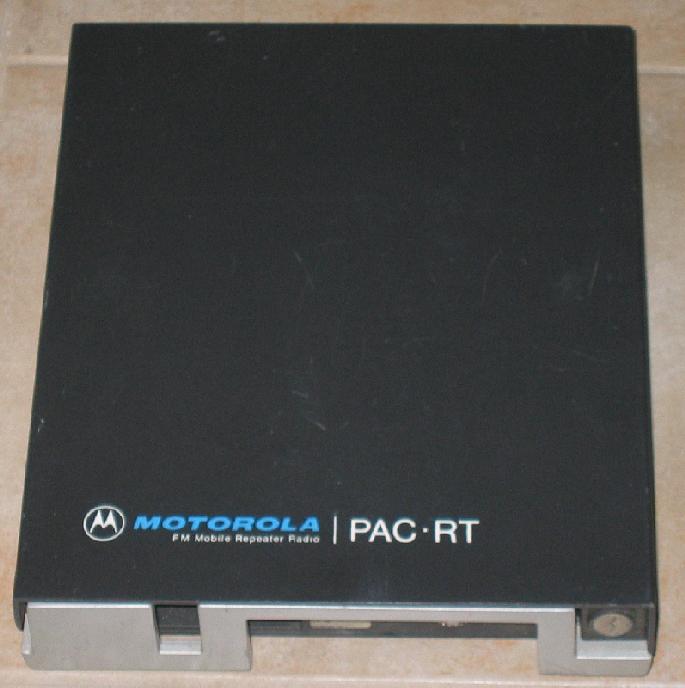
UHF Motorola PAC R/T.
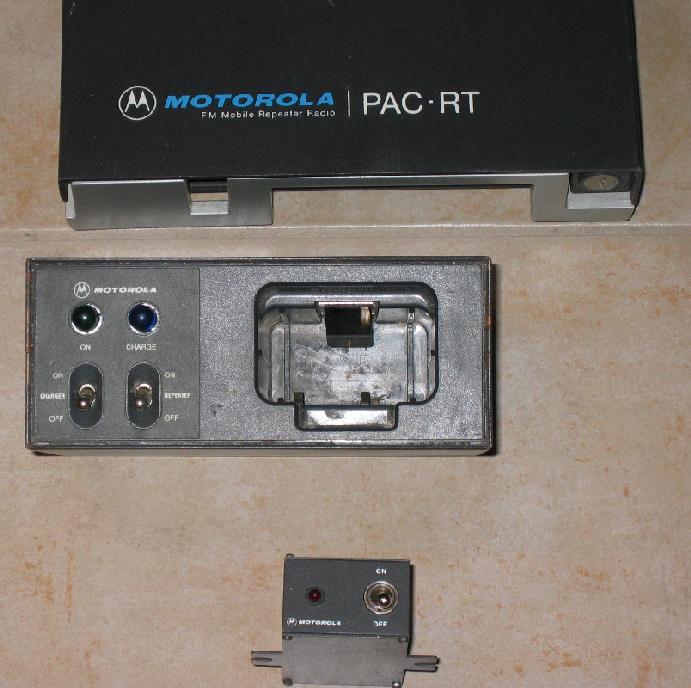
Motorola Converta-com and stand-alone PAC repeater switch.
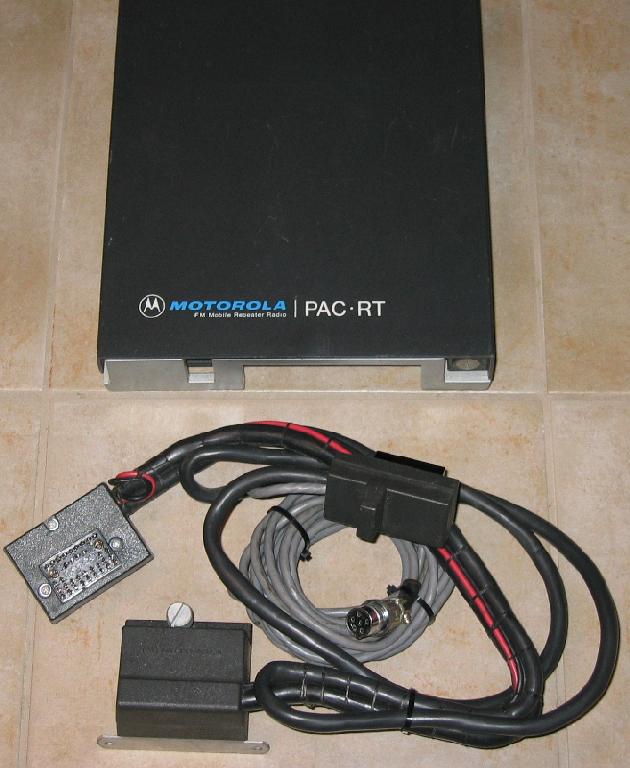
PAC R/T and correct Micor to repeater cabling.
Other Miscellaneous Equipment
Radar units were used throughout the Mustang run, and VASCAR units were sporadically used also. Kustom KR-10, KR-10SP, Trooper, and MPH K-55 radar units were commonly used. Antenna mounting varied, just as everything else did inside. Some cars have been seen with dual antenna setups, while others only ran singles.
Shotguns were normally carried in the trunk, but 1994 footage from Real Stories of the Highway Patrol shows a early 90's SSP with a shotgun rack mounted inside the car, similar to how CHP mounted them. Again, most of the cars did not have this setup, but any number of variations can be found with these cars due to the
non-centralized setup. (pics of that car, which was stationed in Miami, are posted above). The car mentioned above also has a "Lo-Jack" system installed. These systems were provided free of charge to various law enforcement agencies, and they are easy to spot due to the multi-antenna arrangement required to be installed on the rooftop of the vehicle. The sytem is a tracking mechanism for stolen cars (Lo-Lack customers allow techs to install a hidden transmiter, which is activated once the car is reported stolen), and once activated, the equipment leads police to the car.
Here is another pic of the Miami unit mentioned above. Image courtesy of Real Stories of the Highway Patrol.
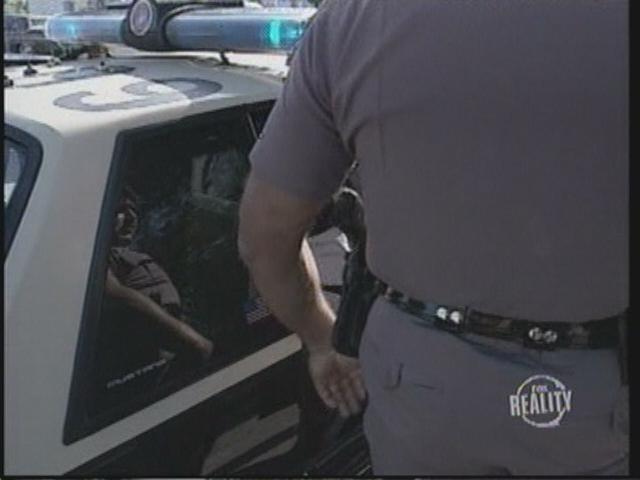
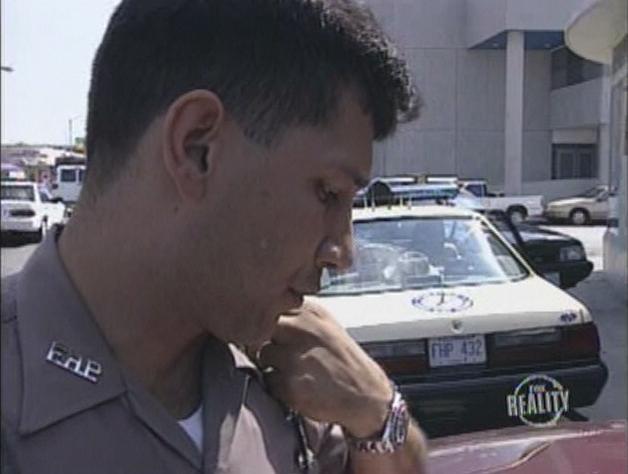 Here's another Miami unit, #432, equipped with Lo-Jack and also running the rear Federal deck lights. Image courtesy of Real Stories of the Highway Patrol.
Here's another Miami unit, #432, equipped with Lo-Jack and also running the rear Federal deck lights. Image courtesy of Real Stories of the Highway Patrol.
FHP did not run any kind of video camera setups in the cars. First aid kits have been seen, carried in the trunk, and vary in styles and sizes. Many other items were also carried in the trunk, and those varied with the preferences of the Trooper assigned to the car.
Many, but not all, FHP Mustangs were equipped with VentShades brand covers on the left and right doors, at the top of the windows. These were stainless-finish deflectors designed so that the windows could be lowered in inclement weather, without a rush of rainwater pouring into the car. The newer Ventshades are plastic, and the correct, older version has long been out of production. An easy way to see if an FHP Mustang was originally equipped with these is to check under the weatherstrip on the outside of the doors to see if the mounting holes are present.
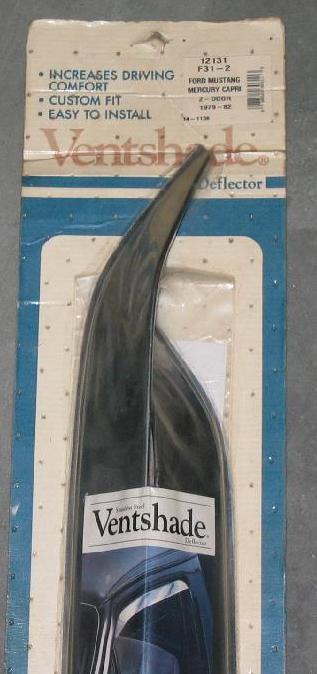
NOS VentShades, part #12131.
Another interesting piece of equipment that FHP added was a coil-kill mechanism. Fitted to the clutch pedal on 5-speed cars (and I'm told the brake pedal on automatics), a toggle switch next to the driver's right leg turned the device on and off. When activated, a Trooper could leave his/her manual transmission-equipped vehicle open and running while on a stop. If someone attempted to take the vehicle,
and didn't deactivate the kill switch, the car would stop running when the clutch was engaged to shift into first (or into drive from "P" on auto cars). The switch underneath the dash could also be activated manually.
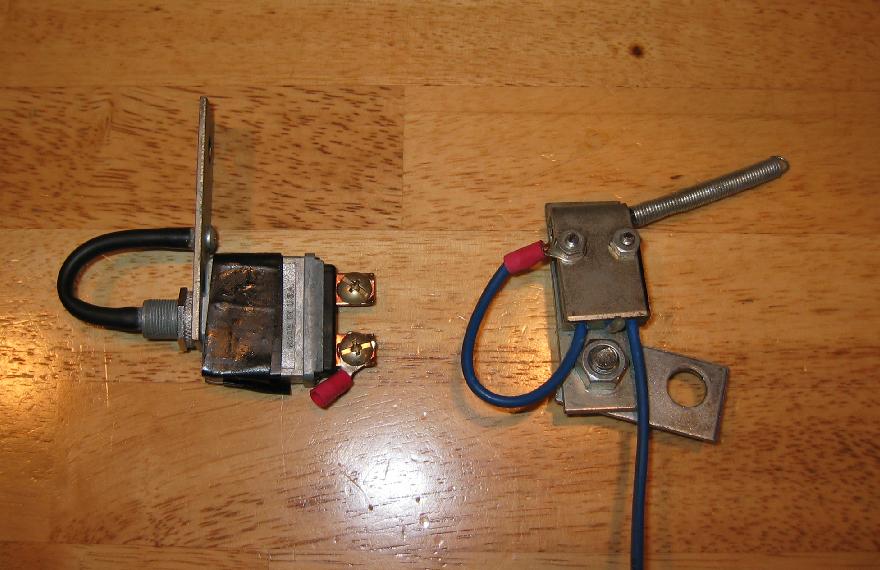
Here are both pieces of the kill switch. The switch on the left is activated by pulling the loop out. If left in the "on" position, the kill function could be controlled by the remote mounted toggle switch. The mechansim on the right (the spring pivots into a switch) was bolted to the clutch pedal, and activated the switch when the clutch was depressed. A wire was run from this setup to the ignition, sending a ground when activated (and thus shutting off the car).
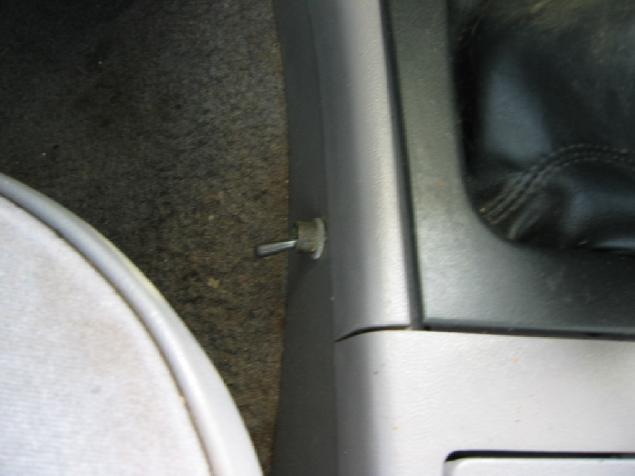 Here is the toggle switch that controlled the kill switch, unit #1187.
Here is the toggle switch that controlled the kill switch, unit #1187.
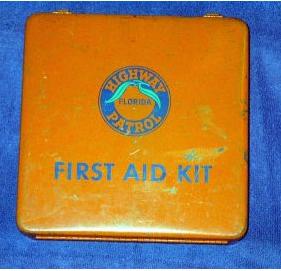 Here is an FHP first aid kit, usually carried in the trunk.
Here is an FHP first aid kit, usually carried in the trunk.
Variations
There are several documented examples of FHP Mustangs running Vector bars, and thus these cars would have to run the correct Vector controller and accompanying equipment.
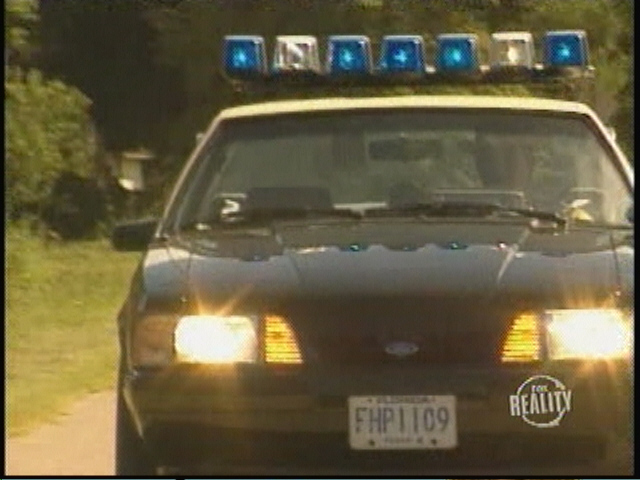
In-service pic with a Vector, unit #1109. Image courtesy of Real Stories of the Highway Patrol.
FHP purchased many unmarked units. Most were automatics, and it isn’t clear when they first began ordering the unmarked cars. Several unmarked cars were 5-speeds (confirmed). Several unmarked units also ran spotlights
.
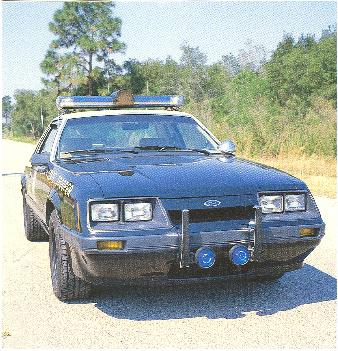
Here's an atpyical 1986, with a pushbar up front with round flashers mounted to it. Pretty unusual setup. Image courtesy of The Mustang Chronicle.
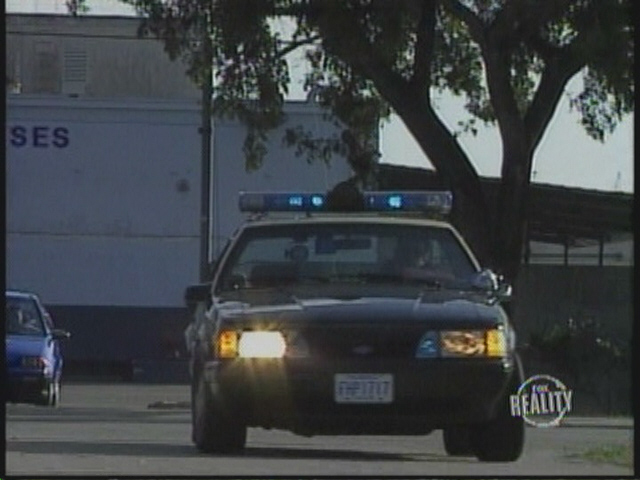
Here's an interesting shot of a Miami unit, #1717. This unit has wig-wag headlights installed (atypical), a Whelen Dash-Master strobe (with the factory bracket) mounted under the windshield header panel, and a piece of equipment I have never seen on any FHP car before... blue halogen flashers in the turn signal housings (alternating flash pattern, just like the headlights). You can also see the front radar antenna in the picture. Image courtesy of Real Stories of the Highway Patrol.
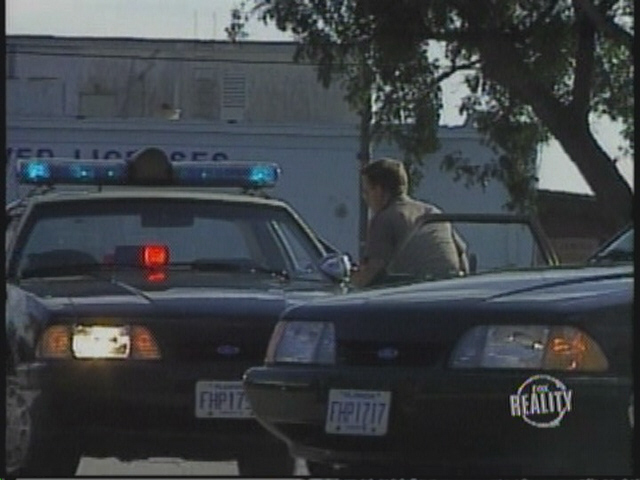
Another Miami unit, #1753, from the same incident. This unit does not have wig-wag headlights installed, and is running a dual Whelen Dash-Master II strobe mounted on the dash, with red and blue lenses (red was caught flashing in the pic). You can see a red, rotating light on the rear deck in the picture (look just to the left of the Dashmaster's blue lens, it's the small square...it can actually be seen rotating in the footage). Finally, the clear takedown filters on the Jetsonic have been swapped for blue filters. These are just a few examples of Troopers adding their own dashlights and of the variations that can exist when it comes time to figure out what equipment was originally installed in any given car. Image courtesy of Real Stories of the Highway Patrol.
It is important to remember that no two Troops did things exactly the same way, so there is no one set way that these cars were outfitted. For example, you may find, during closer inspection of your car, that a headlight flasher had been installed at one time. It may have actually been that way in-service, even though not typically used by the Patrol. These pages outline common ways that the cars were outfitted, but are not designed to cover every variation.
Home
